Chrysler 2010 Annual Report Download - page 50
Download and view the complete annual report
Please find page 50 of the 2010 Chrysler annual report below. You can navigate through the pages in the report by either clicking on the pages listed below, or by using the keyword search tool below to find specific information within the annual report.-
 1
1 -
 2
2 -
 3
3 -
 4
4 -
 5
5 -
 6
6 -
 7
7 -
 8
8 -
 9
9 -
 10
10 -
 11
11 -
 12
12 -
 13
13 -
 14
14 -
 15
15 -
 16
16 -
 17
17 -
 18
18 -
 19
19 -
 20
20 -
 21
21 -
 22
22 -
 23
23 -
 24
24 -
 25
25 -
 26
26 -
 27
27 -
 28
28 -
 29
29 -
 30
30 -
 31
31 -
 32
32 -
 33
33 -
 34
34 -
 35
35 -
 36
36 -
 37
37 -
 38
38 -
 39
39 -
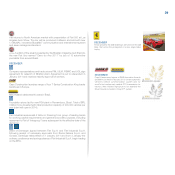 40
40 -
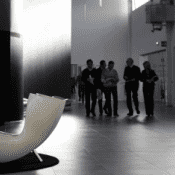 41
41 -
 42
42 -
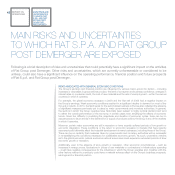 43
43 -
 44
44 -
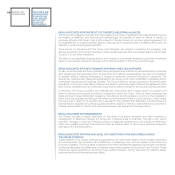 45
45 -
 46
46 -
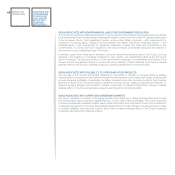 47
47 -
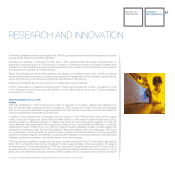 48
48 -
 49
49 -
 50
50 -
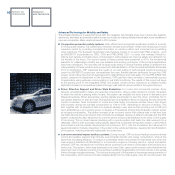 51
51 -
 52
52 -
 53
53 -
 54
54 -
 55
55 -
 56
56 -
 57
57 -
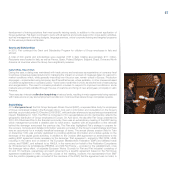 58
58 -
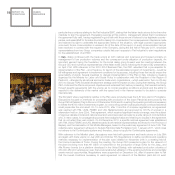 59
59 -
 60
60 -
 61
61 -
 62
62 -
 63
63 -
 64
64 -
 65
65 -
 66
66 -
 67
67 -
 68
68 -
 69
69 -
 70
70 -
 71
71 -
 72
72 -
 73
73 -
 74
74 -
 75
75 -
 76
76 -
 77
77 -
 78
78 -
 79
79 -
 80
80 -
 81
81 -
 82
82 -
 83
83 -
 84
84 -
 85
85 -
 86
86 -
 87
87 -
 88
88 -
 89
89 -
 90
90 -
 91
91 -
 92
92 -
 93
93 -
 94
94 -
 95
95 -
 96
96 -
 97
97 -
 98
98 -
 99
99 -
 100
100 -
 101
101 -
 102
102 -
 103
103 -
 104
104 -
 105
105 -
 106
106 -
 107
107 -
 108
108 -
 109
109 -
 110
110 -
 111
111 -
 112
112 -
 113
113 -
 114
114 -
 115
115 -
 116
116 -
 117
117 -
 118
118 -
 119
119 -
 120
120 -
 121
121 -
 122
122 -
 123
123 -
 124
124 -
 125
125 -
 126
126 -
 127
127 -
 128
128 -
 129
129 -
 130
130 -
 131
131 -
 132
132 -
 133
133 -
 134
134 -
 135
135 -
 136
136 -
 137
137 -
 138
138 -
 139
139 -
 140
140 -
 141
141 -
 142
142 -
 143
143 -
 144
144 -
 145
145 -
 146
146 -
 147
147 -
 148
148 -
 149
149 -
 150
150 -
 151
151 -
 152
152 -
 153
153 -
 154
154 -
 155
155 -
 156
156 -
 157
157 -
 158
158 -
 159
159 -
 160
160 -
 161
161 -
 162
162 -
 163
163 -
 164
164 -
 165
165 -
 166
166 -
 167
167 -
 168
168 -
 169
169 -
 170
170 -
 171
171 -
 172
172 -
 173
173 -
 174
174 -
 175
175 -
 176
176 -
 177
177 -
 178
178 -
 179
179 -
 180
180 -
 181
181 -
 182
182 -
 183
183 -
 184
184 -
 185
185 -
 186
186 -
 187
187 -
 188
188 -
 189
189 -
 190
190 -
 191
191 -
 192
192 -
 193
193 -
 194
194 -
 195
195 -
 196
196 -
 197
197 -
 198
198 -
 199
199 -
 200
200 -
 201
201 -
 202
202 -
 203
203 -
 204
204 -
 205
205 -
 206
206 -
 207
207 -
 208
208 -
 209
209 -
 210
210 -
 211
211 -
 212
212 -
 213
213 -
 214
214 -
 215
215 -
 216
216 -
 217
217 -
 218
218 -
 219
219 -
 220
220 -
 221
221 -
 222
222 -
 223
223 -
 224
224 -
 225
225 -
 226
226 -
 227
227 -
 228
228 -
 229
229 -
 230
230 -
 231
231 -
 232
232 -
 233
233 -
 234
234 -
 235
235 -
 236
236 -
 237
237 -
 238
238 -
 239
239 -
 240
240 -
 241
241 -
 242
242 -
 243
243 -
 244
244 -
 245
245 -
 246
246 -
 247
247 -
 248
248 -
 249
249 -
 250
250 -
 251
251 -
 252
252 -
 253
253 -
 254
254 -
 255
255 -
 256
256 -
 257
257 -
 258
258 -
 259
259 -
 260
260 -
 261
261 -
 262
262 -
 263
263 -
 264
264 -
 265
265 -
 266
266 -
 267
267 -
 268
268 -
 269
269 -
 270
270 -
 271
271 -
 272
272 -
 273
273 -
 274
274 -
 275
275 -
 276
276 -
 277
277 -
 278
278 -
 279
279 -
 280
280 -
 281
281 -
 282
282 -
 283
283 -
 284
284 -
 285
285 -
 286
286 -
 287
287 -
 288
288 -
 289
289 -
 290
290 -
 291
291 -
 292
292 -
 293
293 -
 294
294 -
 295
295 -
 296
296 -
 297
297 -
 298
298 -
 299
299 -
 300
300 -
 301
301 -
 302
302 -
 303
303 -
 304
304 -
 305
305 -
 306
306 -
 307
307 -
 308
308 -
 309
309 -
 310
310 -
 311
311 -
 312
312 -
 313
313 -
 314
314 -
 315
315 -
 316
316 -
 317
317 -
 318
318 -
 319
319 -
 320
320 -
 321
321 -
 322
322 -
 323
323 -
 324
324 -
 325
325 -
 326
326 -
 327
327 -
 328
328 -
 329
329 -
 330
330 -
 331
331 -
 332
332 -
 333
333 -
 334
334 -
 335
335 -
 336
336 -
 337
337 -
 338
338 -
 339
339 -
 340
340 -
 341
341 -
 342
342 -
 343
343 -
 344
344 -
 345
345 -
 346
346 -
 347
347 -
 348
348 -
 349
349 -
 350
350 -
 351
351 -
 352
352 -
 353
353 -
 354
354 -
 355
355 -
 356
356 -
 357
357 -
 358
358 -
 359
359 -
 360
360 -
 361
361 -
 362
362 -
 363
363 -
 364
364 -
 365
365 -
 366
366 -
 367
367 -
 368
368 -
 369
369 -
 370
370 -
 371
371 -
 372
372 -
 373
373 -
 374
374 -
 375
375 -
 376
376 -
 377
377 -
 378
378 -
 379
379 -
 380
380 -
 381
381 -
 382
382 -
 383
383 -
 384
384 -
 385
385 -
 386
386 -
 387
387 -
 388
388 -
 389
389 -
 390
390 -
 391
391 -
 392
392 -
 393
393 -
 394
394 -
 395
395 -
 396
396 -
 397
397 -
 398
398 -
 399
399 -
 400
400 -
 401
401 -
 402
402
 |
 |

49
Second generation MultiAir® technology for gasoline engines. In 2010, production began on the
two-cylinder TwinAir engine, which incorporates MultiAir® technology. For the future, several areas of
development have been identified for the second generation of MultiAir® engines, such as: introduction of
new valve activation methods and new combustion control strategies to further reduce consumption and
emissions; integration of the MultiAir® technology with direct fuel injection to improve the responsiveness of
the cylinders and, consequently, reduce consumption. Also planned is the introduction of new software
for calibration of MultiAir® engines to reduce development times, in addition to advanced turbo-charging
technologies that maximize synergies through integration with the MultiAir®.
Heavy Duty Cursor 8 engine fueled with pure bioethanol. Over the past ten years, the market for
bioethanol-powered passenger cars in Brazil has grown significantly. Recently, interest has also expanded
to industrial and off-road application as bioethanol produced from sugar cane in Brazil satisfies all the
requirements to be considered a true fuel alternative (economic, from renewable sources, not in competition
with the food supply chain, readily available, etc.). One of the most promising applications is the sugar cane
harvester, an off-road vehicle that requires high engine performance. To meet that need, CRF took the
well-proven Cursor 8 spark ignition CNG engine and modified the fuel system and compression ratio to
adapt it for use with bioethanol, resulting in a prototype capable of achieving power output of 243 kW. This
system is currently being mounted on the vehicle to conduct field tests, with a view to scale production of
this engine, which will provide a 50% reduction in Well-to-Wheel impact and a 70% reduction in running
costs compared to the conventional diesel version.
Twin Clutch Transmission on the Alfa Romeo MiTo. The twin clutch transmission consists of two parallel
gear sets, one for the odd gears and the other for the even gears, each with its own clutch. The distinctive
feature of this system is that the gear shift takes place without disengaging the gears, providing continuous
traction to the wheels. This makes the twin clutch transmission more comfortable and efficient than an
automated manual transmission (AMT) and equivalent, or better, than a conventional automatic transmission
with torque converter. The Twin Clutch technology developed by Fiat Group in recent years is based on
dry clutch technology, which offers improved fuel consumption. The C635 Twin Clutch transmission (TCT)
was introduced for the first time in 2010 on the Alfa Rome MiTo together with a 135 hp 1.4 Fire MultiAir and
Start&Stop system. With this enhancement, the MiTo TCT achieved an official CO2 emissions level of 126g/
km, which is well below the manual version and unachievable with a conventional automatic transmission.
Further development of CNG/hydrogen blends. The objective of the “green corridor” initiative, promoted
by Autostrada del Brennero (operator of the A22 in Italy), is to study the distribution and use of renewable
source fuels along the 650km stretch of freeway between Munich and Modena. CNG/hydrogen technology
is of great interest to the A22 operator, because it will make investment in development of the hydrogen
production and distribution infrastructure possible. The hydrogen used to produce this blend will come from
surplus energy produced by a hydro-electric powerplant located along the route. During 2010, CRF’s Trento
facility, in close collaboration with FPT Research & Technologies, Iveco and Officine Brennero, successfully
achieved the objectives of the project, including modification of the key components of the fuel storage
and distribution system, and development and calibration of an engine to use a CNG/hydrogen blend. Also
at the Trento facility, an info-telematic application based on the Blue&Me™ platform was developed which
enables the vehicle’s position to be traced via GPS and data to be retrieved from the engine control unit. By
registering the details of the CNG/hydrogen blend used to refuel, the application is also able to estimate the
remaining fuel range and the benefits in terms of CO2 reduction. Following type approval and testing at the
Trento facility, an Iveco Daily CNG/hydrogen prototype will be delivered to the A22 operator in 2011.
